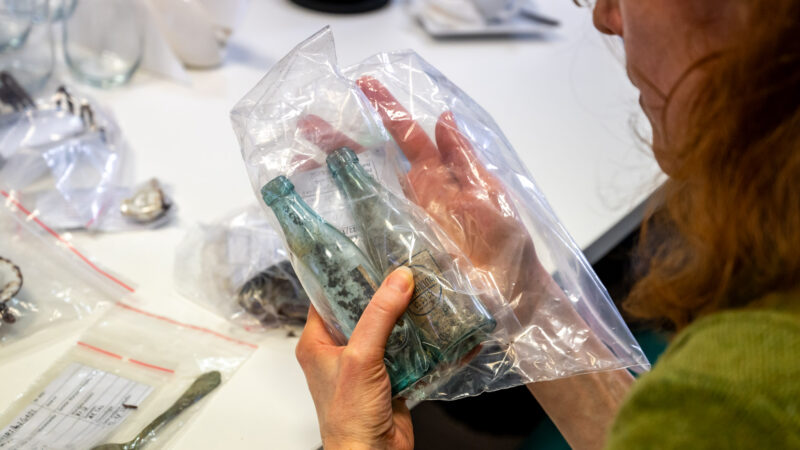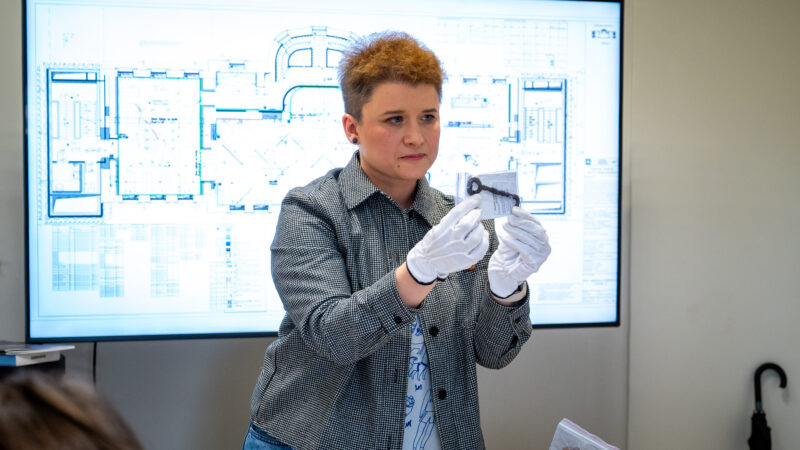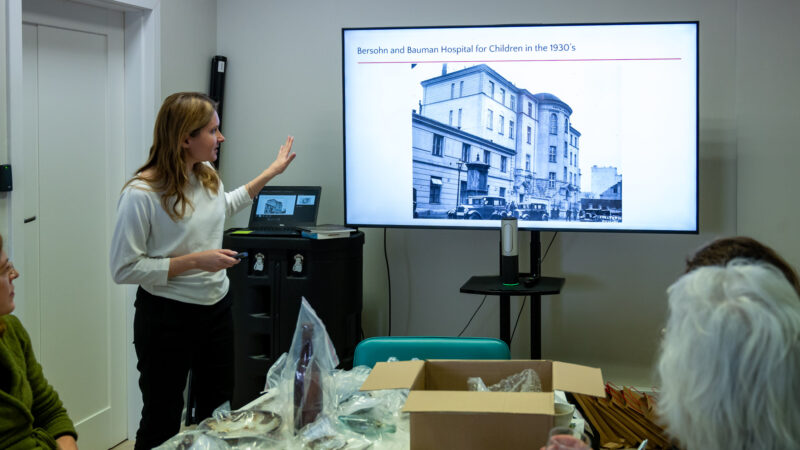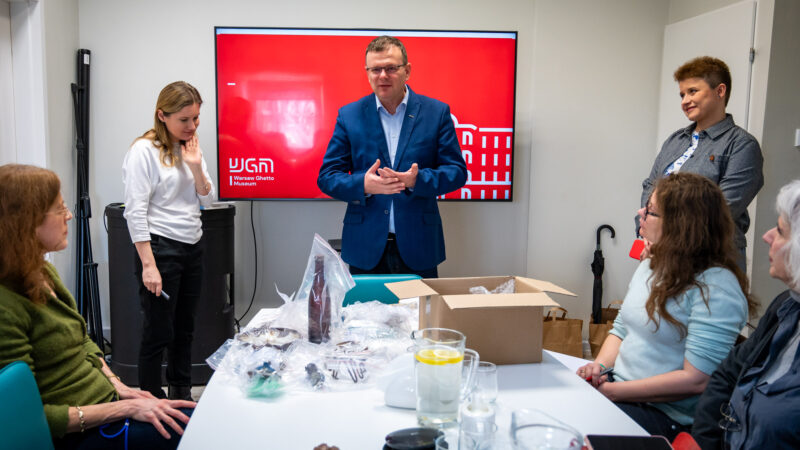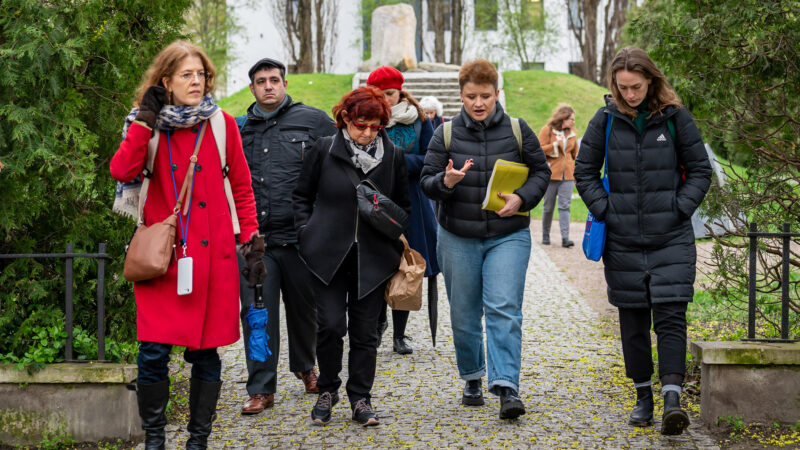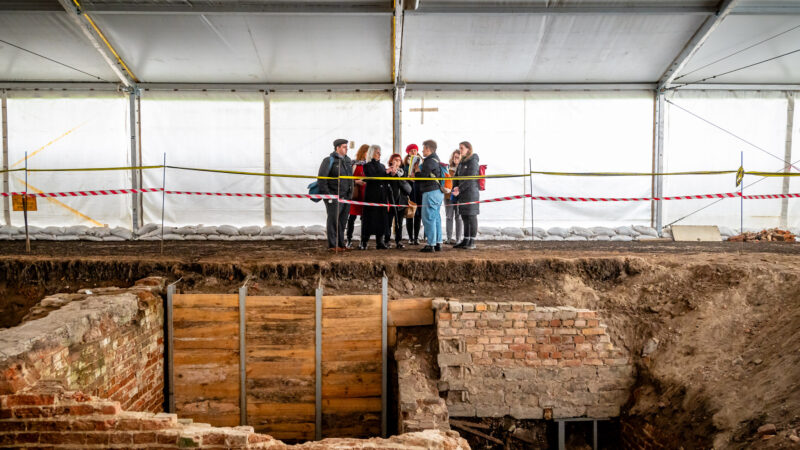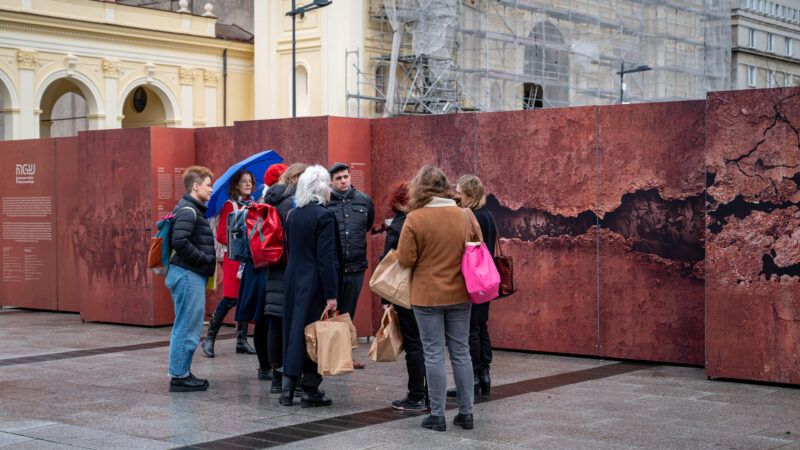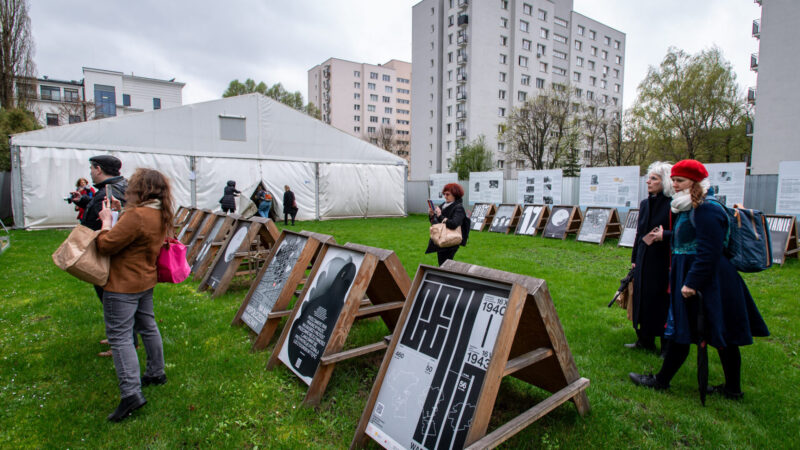IHRA’s visit to Warsaw Ghetto Museum
In early April, the Warsaw Ghetto Museum hosted a visit by a delegation from the IHRA (International Holocaust Remembrance Alliance), to whom we presented the results of several years’ work, as well as our plans for the nascent Museum and the permanent exhibition which is being prepared.
The guests, along with Prof. Gilly Carr of Cambridge University, who leads IHRA’s project of safeguarding Holocaust related sites to preserve its record, attended a meeting introducing them to the concept of the Museum’s permanent exhibition and selected artefacts to be included therein. They also visited the IWM’s latest open-air exhibition at Grzybowski Square #WeCollectBuildRemember and saw the construction and conservation work currently underway at the former Bersohn and Bauman hospital complex – the future location of the Warsaw Ghetto Museum.
Central point of the delegation’s visit was a tour of the archaeological site at the former 18 Miła Street. The IHRA delegates emphasised the particular potential that proper preservation of the excavation area at the former 18 Miła Street has for the city – where residents can not only learn more about the Warsaw Ghetto, but also see its traces with their own eyes. In addition to their words of approval for the Museum’s efforts to commemorate the site, the IHRA delegates provided valuable guidance on its proper preservation.
Katarzyna Person, Deputy Director for Research and Exhibitions: “The IHRA delegates offered highly informative insights into the technical aspects of securing excavations and shared their experience of commemorations located at historically significant sites. Together with the IHRA delegates, we also worked on the IHRA Charter for Safeguarding Sites, which sets out best practice for dealing with places directly related to the Holocaust. For us, this was an immensely valuable visit and I am confident that the IHRA’s guidelines will be taken into account in further activities at Miła 18, ensuring that the site is safeguarded in the best way possible as a witness to the latter stage of the Warsaw Ghetto’s existence.”


